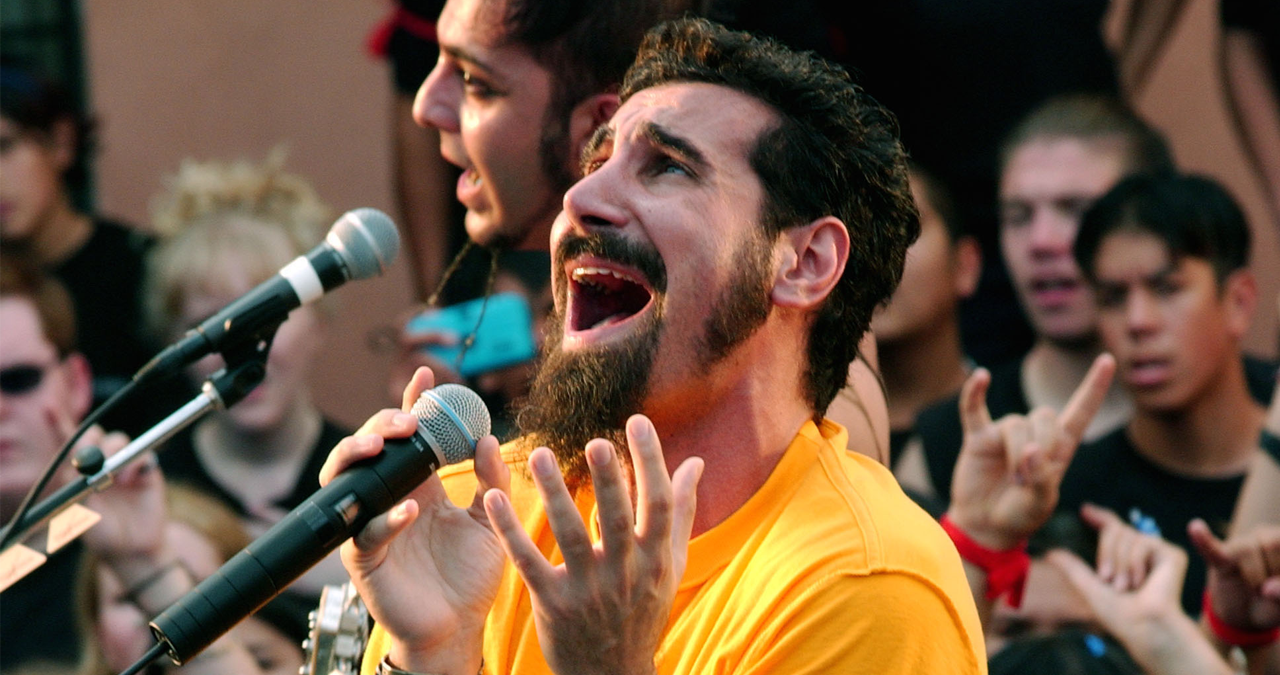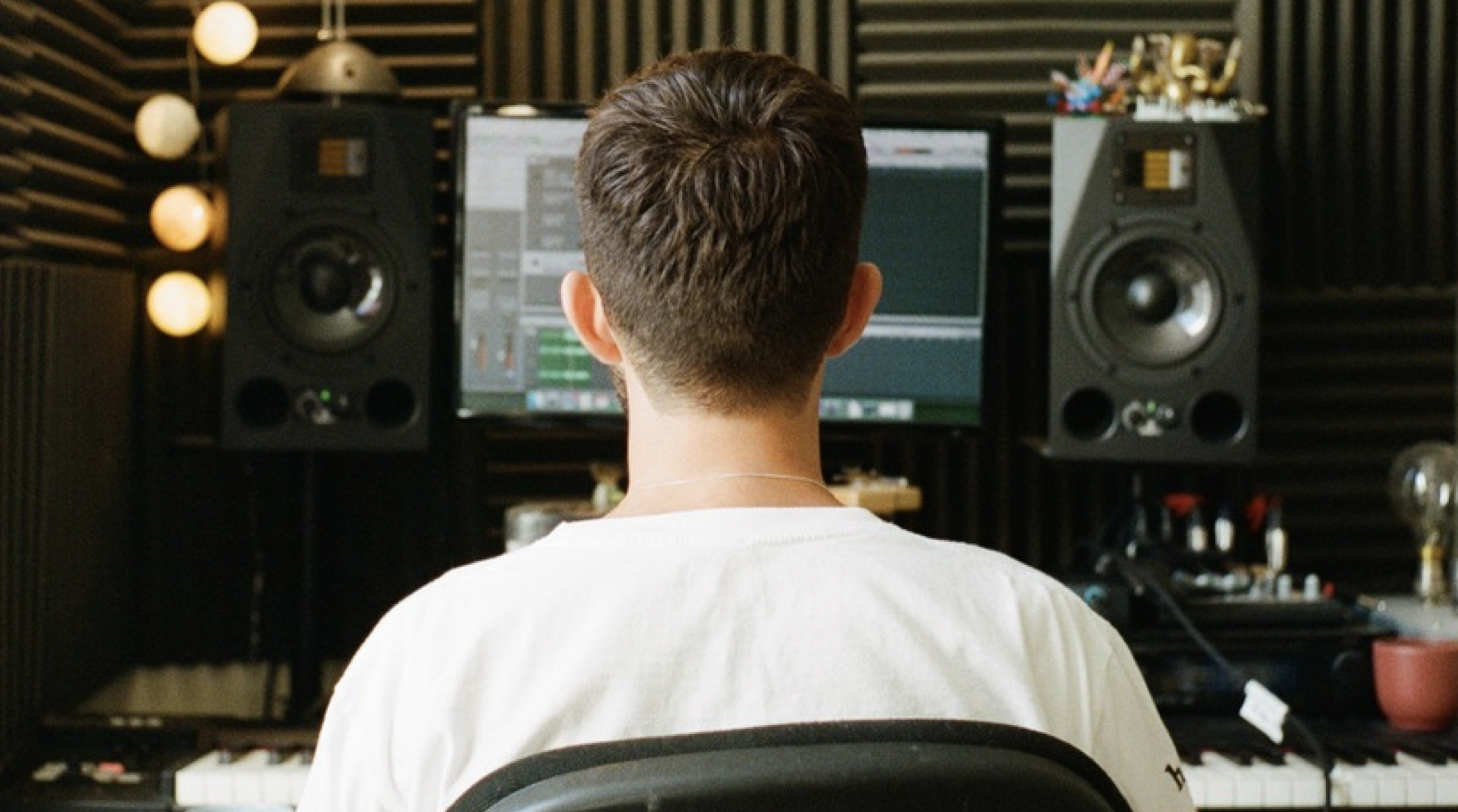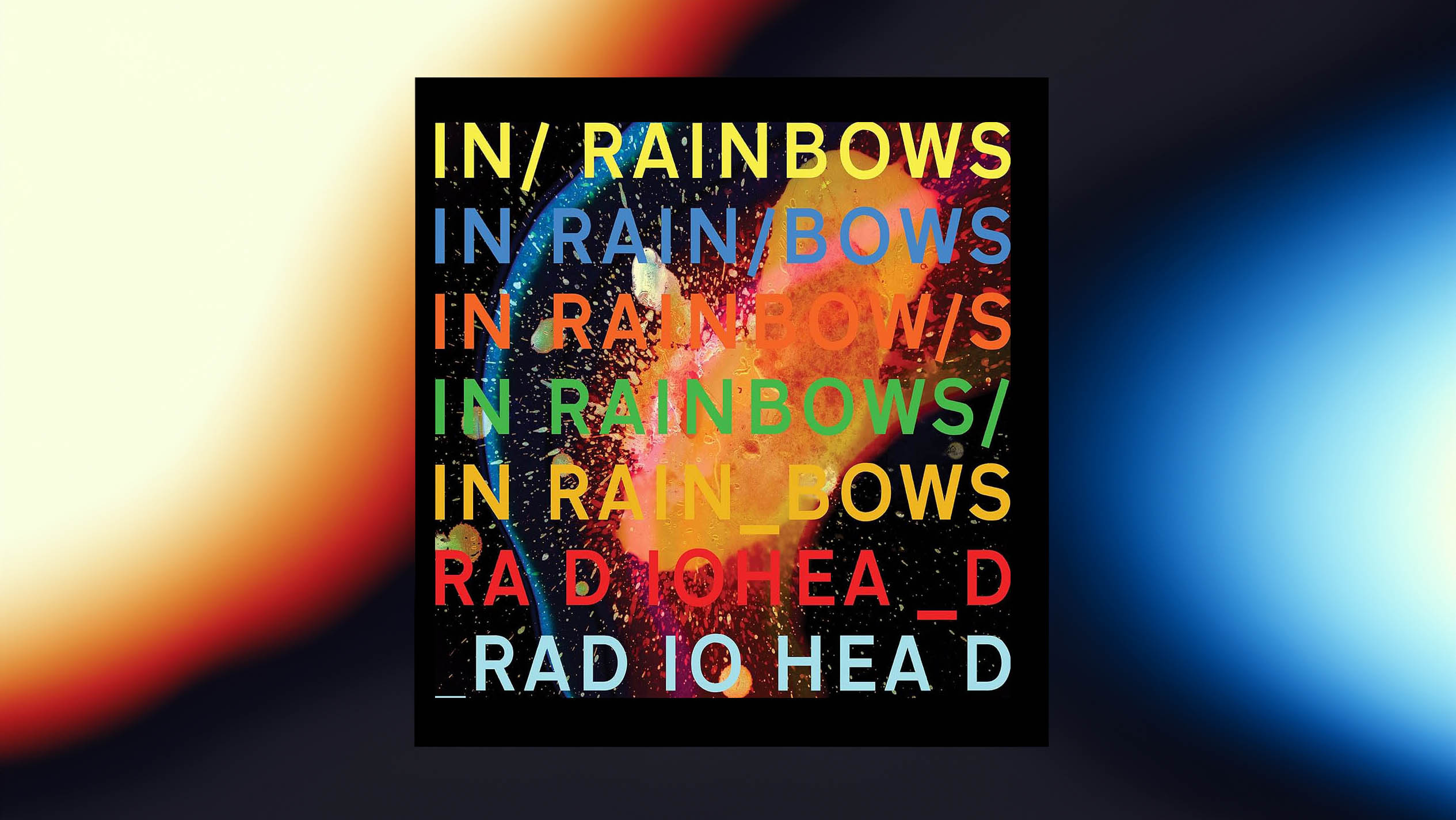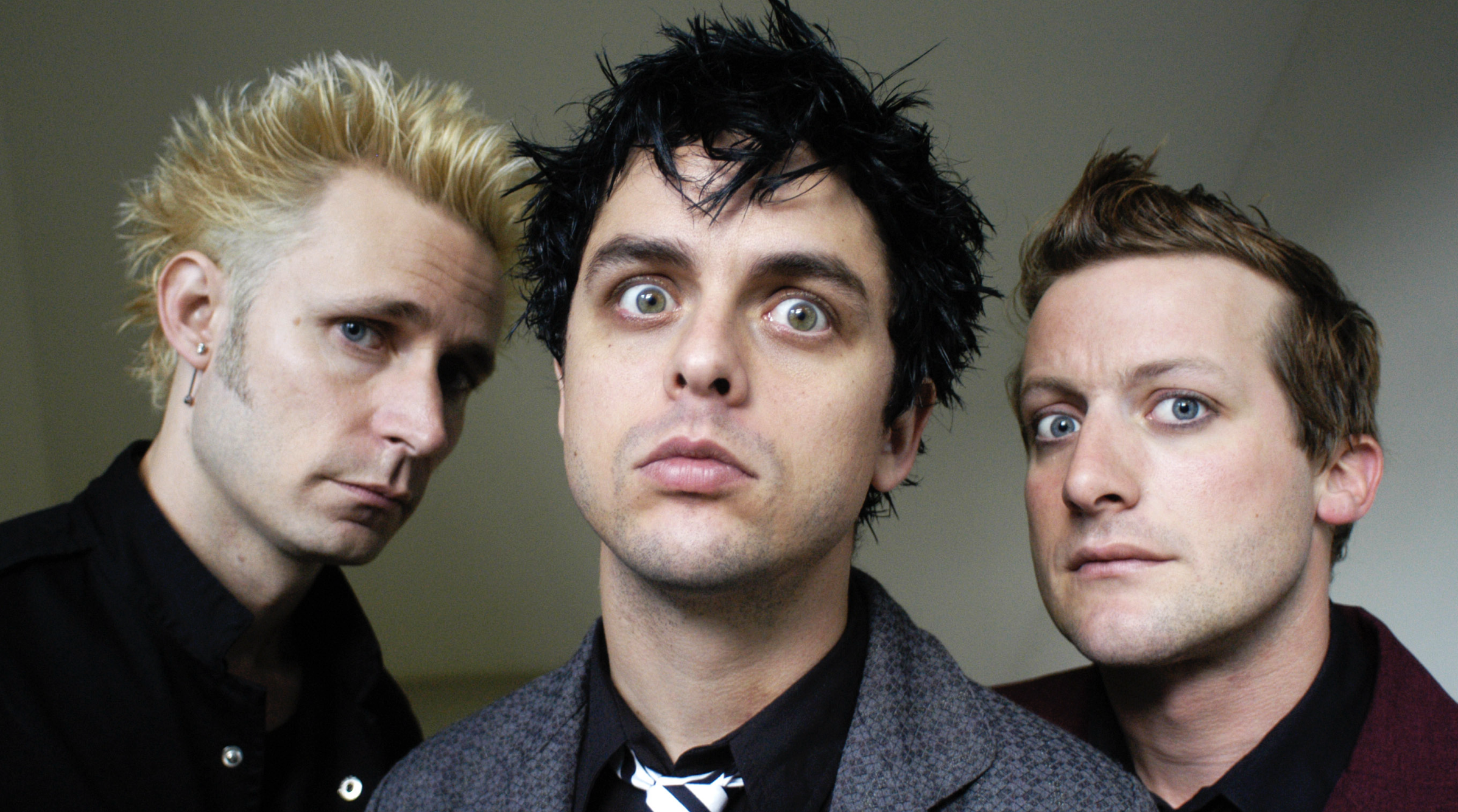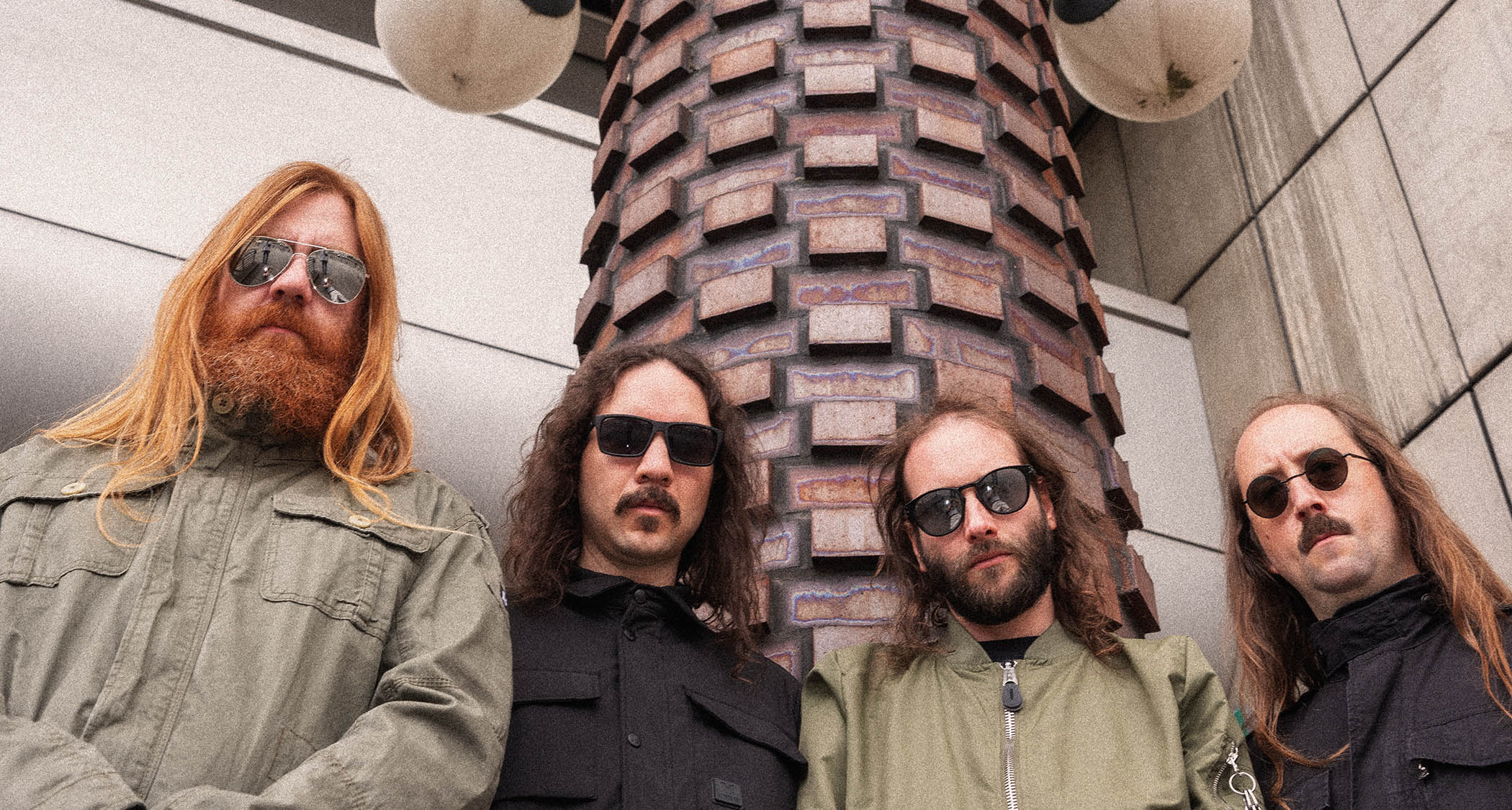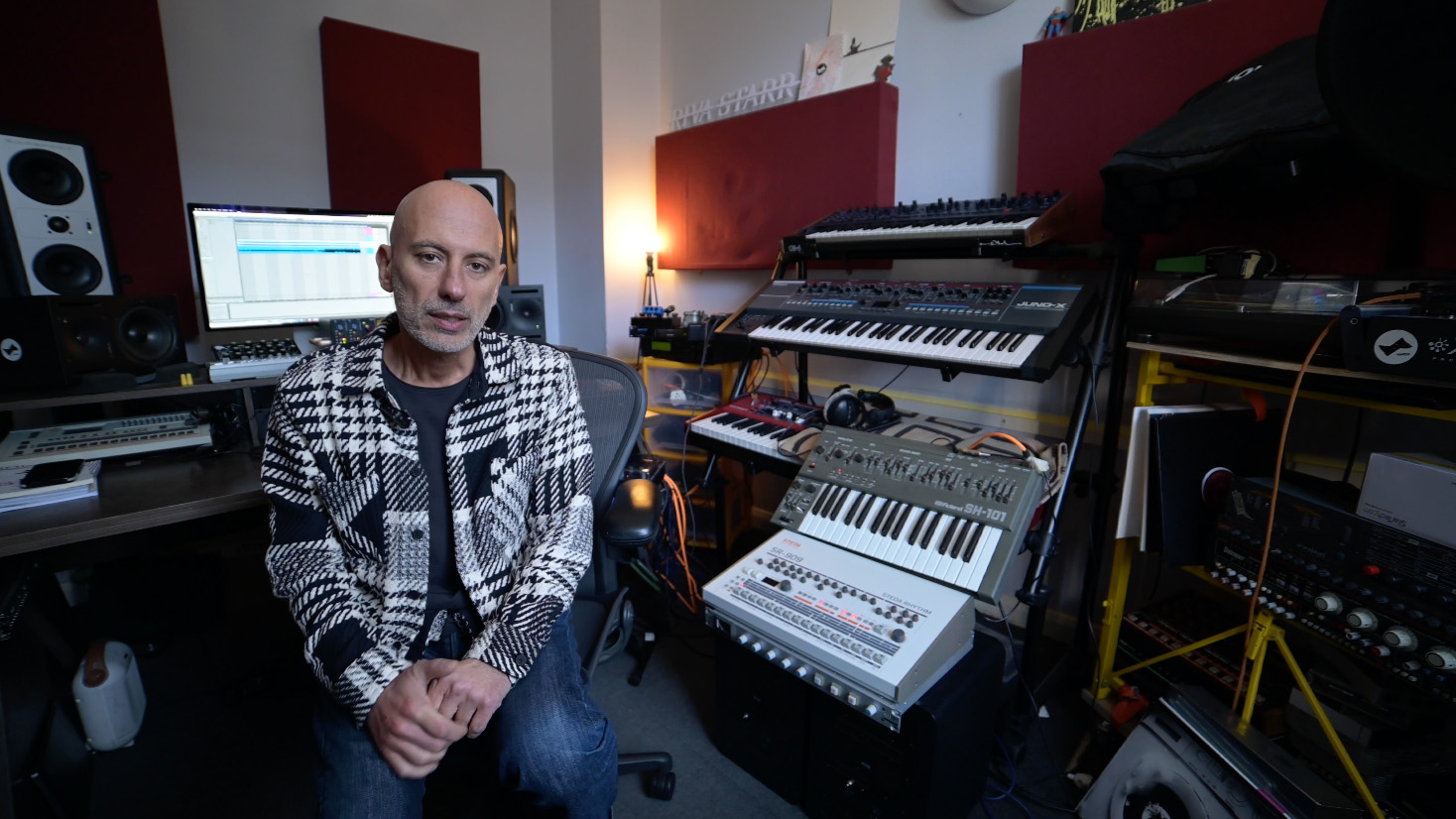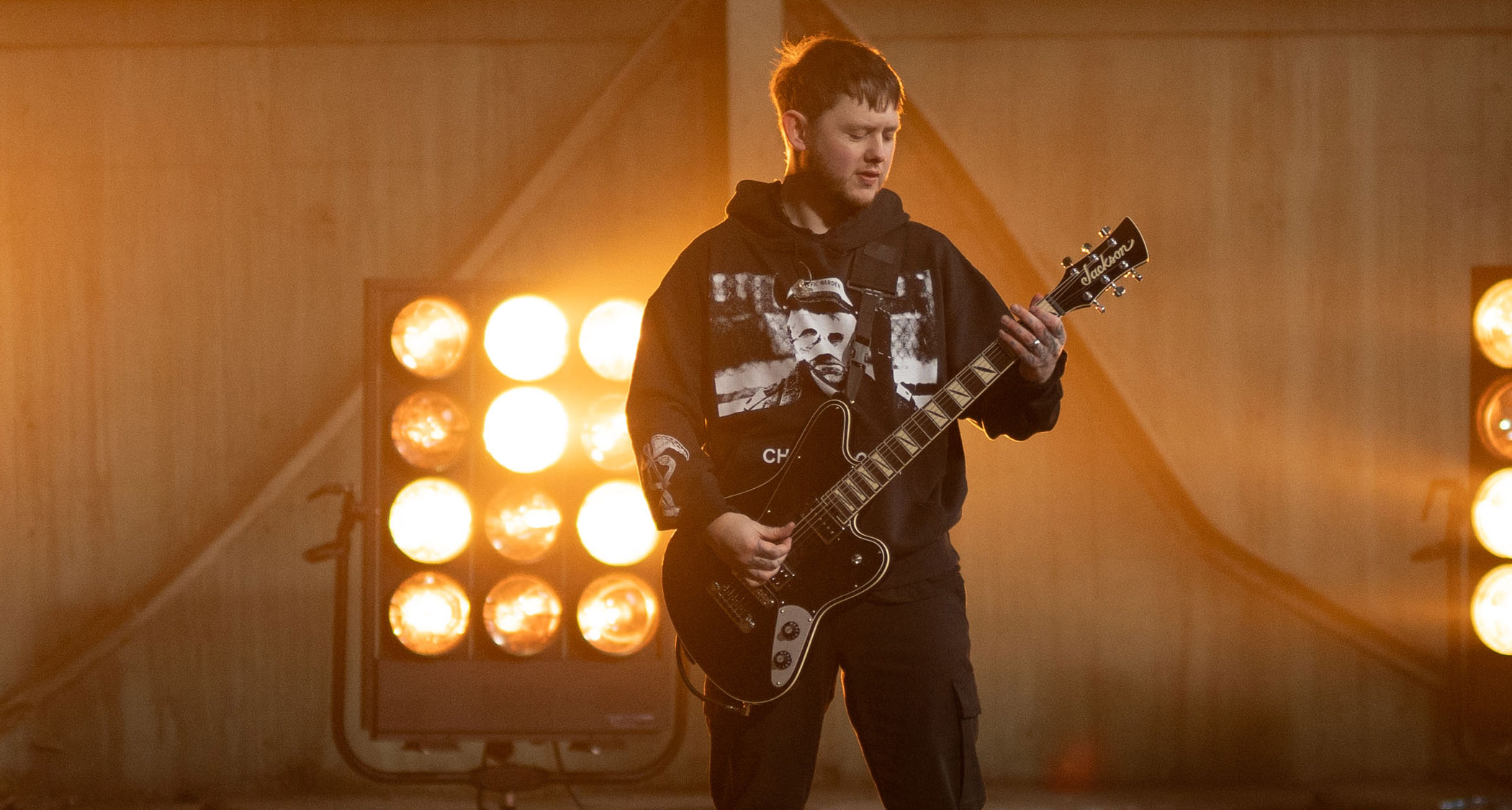"I remember showing up at 10 or 11 in the morning and working on solos and that leading to two or three o’clock in the morning the next day”: How Metallica beat the clock and battled fatigue to create a poignant and pulverising anti-war epic
The sound of Metallica in full command, One would prove to be the ultimate thrash metal power ballad
![James Hetfield [left] and Kirk Hammett harmonise solos as they perform live with Metallica in 1988. Hammett plays a Jackson Rhodes, Hetfield has his trusty white Explorer.](https://cdn.mos.cms.futurecdn.net/mpZgd7e7YSCLwb7LuqPpbi.jpg)
Metallica could have packed it all in and walked away after the tragic bus crash that claimed the life of bassist Cliff Burton on 27 September 1986. But they didn’t. They persisted, recruiting Jason Newsted from Flotsam And Jetsam, and putting together the most audacious – perhaps the most brilliant – album of their career.
…And Justice For All was never going to be an easy record. Not for the band. Not for the audience. Even now, it sounds audacious. Never before or since have James Hetfield and Kirk Hammett committed such a hostile electric guitar tone to tape.
With its dense, byzantine arrangements, tricksy time signatures, and a mercilessly bleak atmosphere, …And Justice For All stands as the apogee of Metallica’s musical ambitions – at least as far as thrash metal was concerned.
Their debut album Kill ‘Em All helped inaugurate that art form in the summer of 1983. Ride The Lightning (1984) would widen the canvas, testing the hypothesis that headbanger savagery and a burgeoning appetite for musical progressivism could be held in perfect equilibrium, and two years later, the crystalline front-to-back perfection of Master Of Puppets presented material evidence that this hypothesis would hold true.
…And Justice For All doubled down on all that came before. It had to. And the album’s centre-piece, the anti-war epic One, realigned the stars for Metallica. Alternating between fatalist balladry of the verse and the rhythmically unwieldy riff violence of the chorus, before going full metal jacket on its rat-tat-tat second act, its explosive dynamics shattered the glass ceiling for underground metal bands.
Anything was possible now. In 1990, One even won Metallica their first Grammy for Best Metal Performance, after Jethro Tull famously usurped them the year previous. They broke their own rule, too, and shot a promo video.
But if it was instrumental in finding a wider audience it would do so on Metallica’s terms. One is all kinds of brutal, lyrically and musically. We could see One as the thematic successor to Disposable Heroes, or For Whom The Bell Tolls, or as completing a thrash power ballad trilogy that started with Fade To Black and Welcome Home (Sanitarium).
Get the MusicRadar Newsletter
Want all the hottest music and gear news, reviews, deals, features and more, direct to your inbox? Sign up here.
The song itself was inspired by the catastrophically injured protagonist in Dalton Trumbo’s Johnny Got His Gun, a war veteran who loses his limbs, sight, hearing and speech while his mind remains sharp, wishing for death. Hetfield’s lyrics give him a voice and they could scarcely be darker.
As with all the best ideas in metal, the inspiration for the melody came from Venom, whose B to G chord progression on Buried Alive [from the seminal 1982 album Black Metal] had been stuck in Hetfield’s brain, and he would find a use for it during the opening section for One. The thrash violence came after the fact.
“The kick drum machine-gun part near the end wasn’t written with the war lyrics in mind, it just came out that way,” Hetfield told Guitar World in 2009.
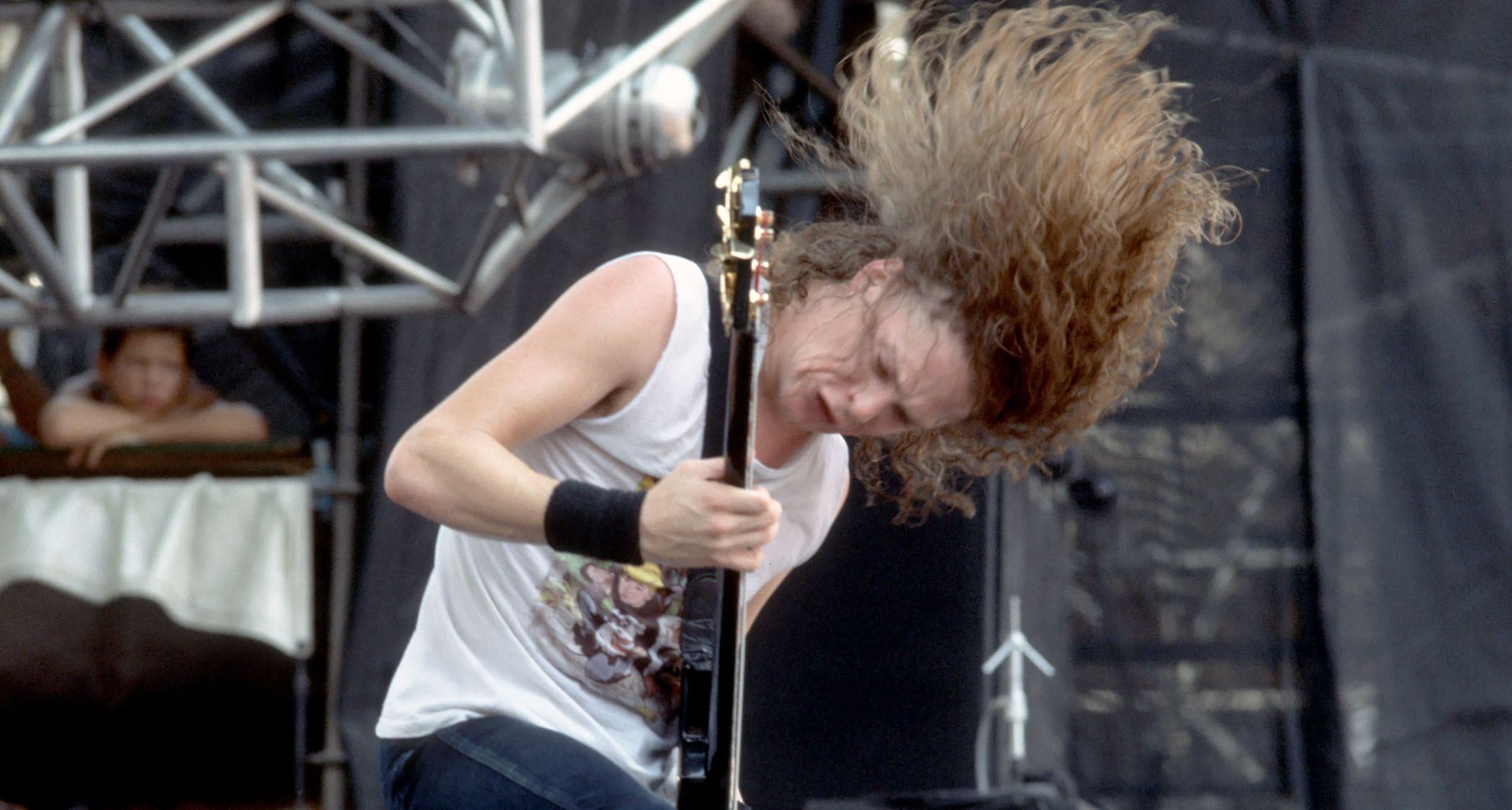
But the most significant modulation on One is not from B to G; it’s from those pristine clean tones those scooped EQ thrash tones courtesy of a Mesa/Boogie Mark C++ head.
By this point, Hetfield was a devotee of the Roland JC-120 Jazz-Chorus, the solid-state combo with onboard chorusing and a credible claim to being the best clean guitar amp of all time.
Would Hammett have used one too? Perhaps. But as he remembers it, in the same Guitar World interview as Hetfield's, the A/DA MP-1 preamp rack module was responsible for his cleans.
“I used an ADA preamp and an A/DA MP-1. It was a programmable digital amp that had tubes in it, with a separate rack-mounted Aphex parametric EQ,” said Hammett. “I remember blending that thing with the Boogies for lead sounds and clean sounds. The clean sound on One was done almost exclusively with the A/DA MP-1.”
Hammett’s guitar for the one sessions was his ESP KH-1, the all black first-generation S-style signature guitar from the brand with the skull-and-crossbones fretboard inlays. When speaking to Mark Agnesi for Gibson TV’s The Collection, Hammett described his KH-1 as a “Flying V in a Strat body” with one particular modification mandated by the demands of performing One live.
“All my ESP guitars have had the same specs ever since 1988 or ’89. It’s just paint jobs. That’s the only thing that changes,” he said. “There’s a slight scallop from like the 17th fret. It’s only so I can do the guitar solo for One. [Laughs] The only reason why it’s scalloped! That’s the only reason why. Nothing else. Because I am not a right-hand [tapping] technique guy.”
And yet on one he is, tapping out a pentatonic arpeggio in the upper registers. Hammett told Guitar World that he might have sweated over his lead parts on One but that tapping came easy. With Ulrich working those double kick drums, the staccato strobes and pyro of it all, how else could he play it?
“The main guitar solo at the end, with the right-hand, Eddie Van Halen-type tapping, came almost immediately,” said Hammett. “That guitar solo was just a breeze; what was going on with the rhythm section in that part of the song was just very, very exciting for me to solo over.”
The other solos, not so easy. Hammett credits Hetfield for inspiring his first solo. It came from a melody the Metallica frontman was playing around with. The clean picked arpeggios in the first solo came from a chord exercise but sounds anything but. As for the solo in the middle of One? Hammett was going to suffer for that. But this was never going to be an easy album.
…And Justice For All had a difficult birth. Mike Clink, who had produced Guns N’ Roses’ incendiary debut, Appetite For Destruction, was in the control room, only to be replaced by returning Master Of Puppets producer Flemming Rasmussen. The finished mix would immediately be controversial on account of Newsted’s bass guitar being all but inaudible.
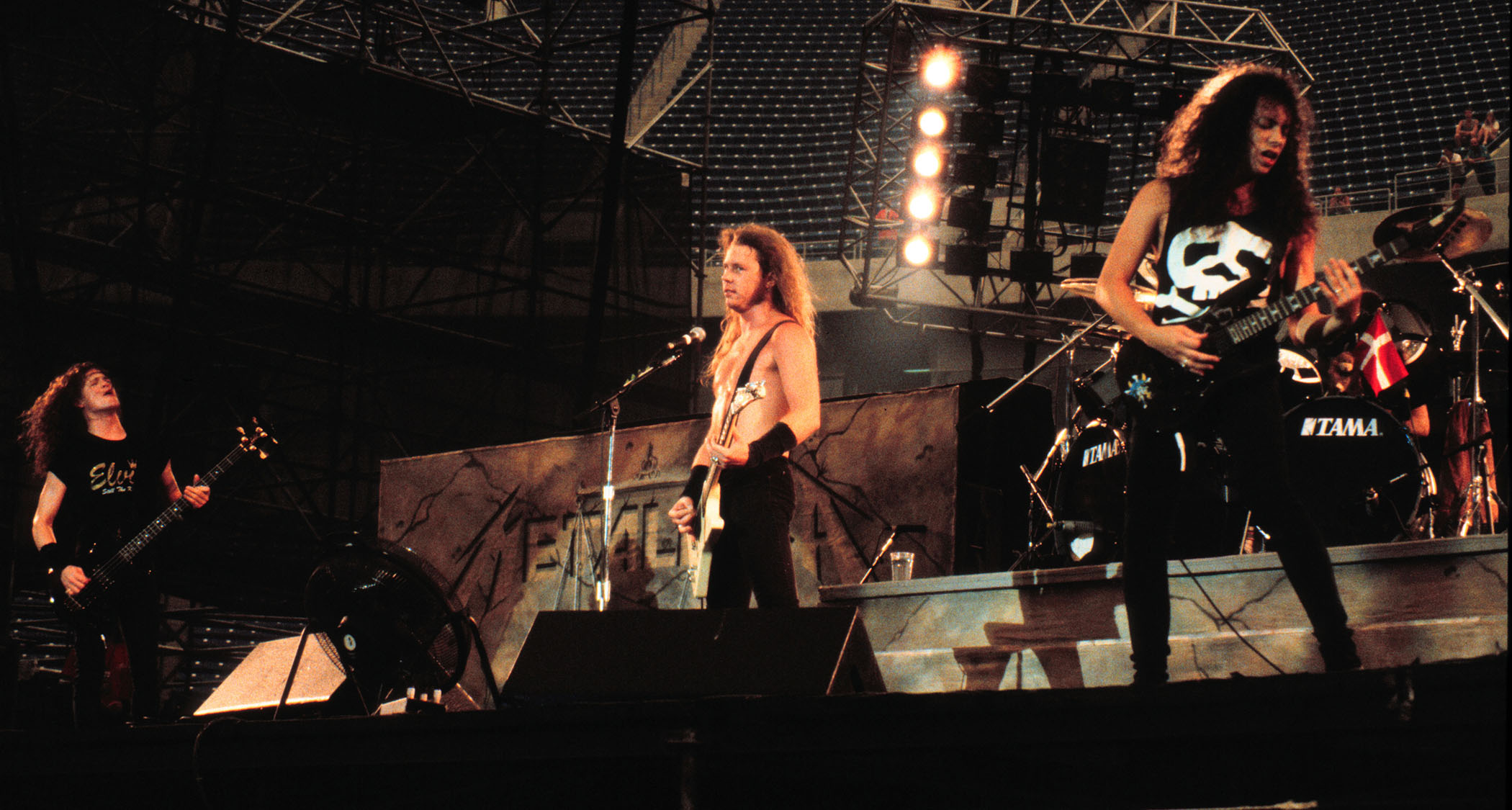
Speaking to MusicRadar in 2016, Hetfield admitted that a relentless touring schedule, epic sets at high-volume, had fried their hearing and this ultimately affected the mix – especially with Hetfield and Ulrich more involved in the control room.
Well, you can tell who produced it because the guitars and the drums and the vocals are really loud
James Hetfield
“I know there’s quite a few people that love that record; there’s a real punchiness to it, and because it’s somewhat progressive, that does fit with it a bit,” said Hetfield. “You can hear things a little better.
“Obviously there’s not much depth to it as far as thickness goes and, you know, it is what it is because that’s Lars and I trying to venture into producing ourselves and discovering… Well, you can tell who produced it because the guitars and the drums and the vocals are really loud.”
The walls were closing in. Metallica were running out of time, and mixed …And Justice For All during their run on the 1988 Monsters Of Rock Tour, where they where sharing a bill with Van Halen, Scorpions, Dokken and German hard-rockers Kingdom Come. Hetfield said this was fine while they were on the East Coast. As the tour ventured westwards it proved to be a logistical nightmare.
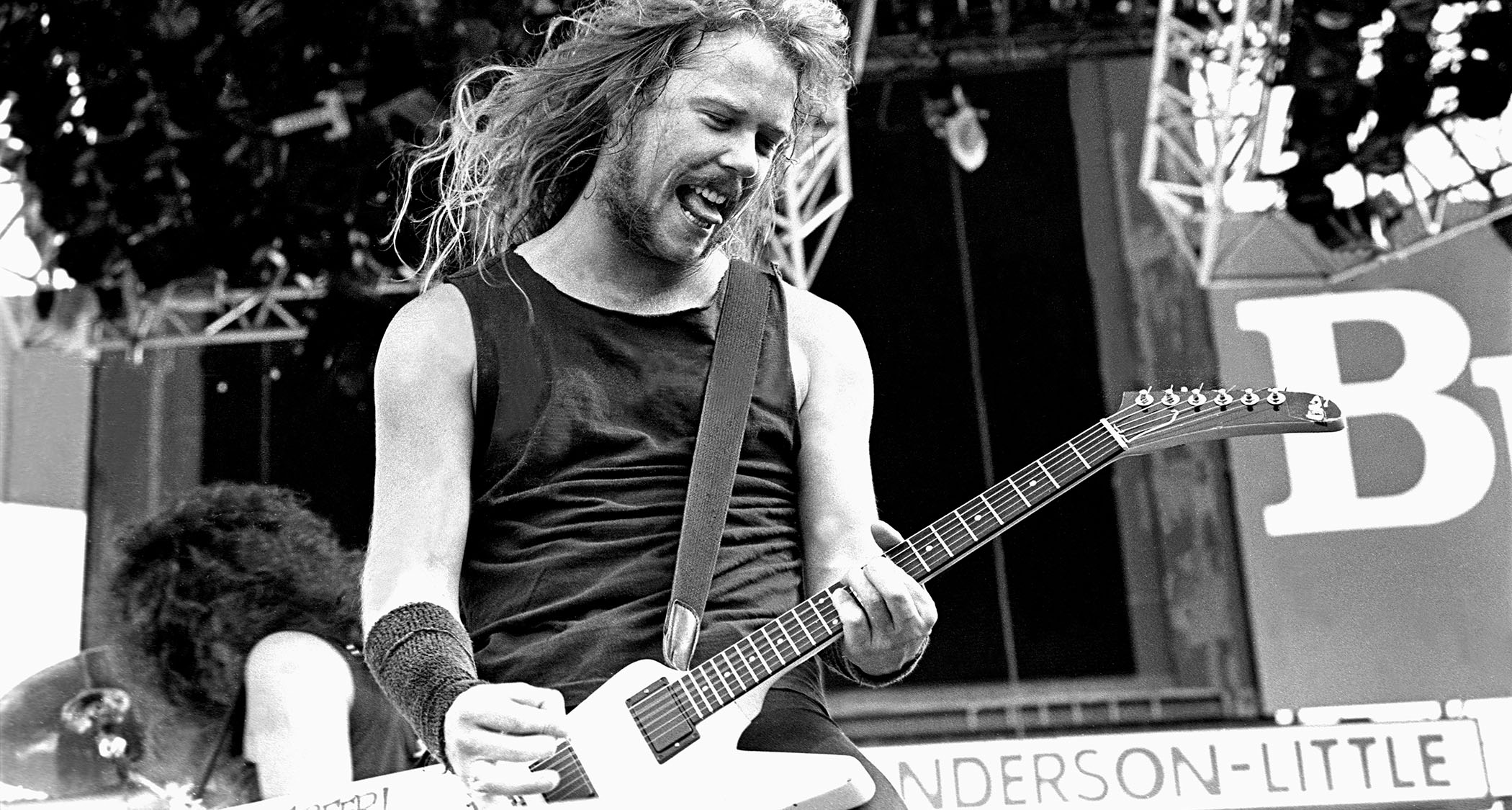
“On a day off, Lars and I would fly… well, fly or drive. Most of the times, drive,” he said. “I remember at the time limos were a big deal and it actually had leg room for me.
I can remember showing up at 10 or 11 in the morning and working on solos and that leading to two or three o’clock in the morning the next day. It was just ridiculous
“Sleeping on an eight-hour drive in a limo to wherever from somewhere in Iowa or wherever when we were mixing this thing in upstate New York. So we were pretty fatigued, ear-fatigued as well. That’s a big factor in it, I think. There’s a lot more high-end and it had to cut through our deaf ears at that point.”
Physically, they were on their feet. Hammett had not yet finished all of his solos and time was of the essence. He, too, had to make the commute back to the Hit Factory in New York to track lead guitars under Rasmussen’s guidance.
“When we were recording that album I really didn’t have as much time to do the solos as I’d wanted to,” said Hammett. “I think we had to leave for the Monsters Of Rock Tour on a Saturday and it was Thursday but we were still recording guitar solos. I can remember showing up at 10 or 11 in the morning and working on solos and that leading to two or three o’clock in the morning the next day. It was just ridiculous: 15 or 16 hours of recording. And I had four or five days of that.”
Monsters Of Rock would have been an occasion to try out some of the new material but only Harvester Of Sorrow made it onto the setlist – which is ironic considering just how much trouble it was giving Hammett. That was one solo that he just couldn’t put away, and Rasmussen was not going to push him for it.
“I was so tired, it was so late at night and my fingers and hands were so fatigued that I had trouble bending a note in key to another note,” said Hammett. “I remember Flemming saying, ‘Okay, just bend it this much. Just bend it a half-step and I’ll take it up with the harmoniser for the other half-step.’ And I remember thinking to myself, ‘Is this really necessary, or can we just stop and do it all over again properly tomorrow?’ But there wasn’t a tomorrow. We had to do it that way.”
That middle section solo to One was still haunting Hammett. “I must have recorded and rerecorded it about 15 million times,” he told Guitar World. “I wanted a middle ground between the really melodic solo at the beginning and the fiery solo at the end.”
He didn’t get it. What he did get was more air miles and more late nights. He finally tracked it on the eve of their performance at the RFK Stadium, in Washington DC, on 10 June. He had the solo, a piece that could sit between the melodic grandeur of One’s first act and the artillery fire of the outro. The Washington show sucked but so what. One was complete.
It would make its live debut on 11 September 1988 at the MTK Stadion, Budapest, Hungary, on the opening night of the Damaged Justice tour, when Metallica, similarly damaged but renewed, would open a new chapter for the band.
…And Justice For All was the ne plus ultra of thrash metal progressivism. There was no way to top it. Maybe this was reason enough for Metallica to seek Bob Rock’s counsel and engineer a box-office refresh of their sound on 1991’s Black Album. But the momentum towards mega-stardom and the conquering of the world’s stadia was gained on the battle to finish One. Just as well. If you are going to perform it live, then you need a big venue with all those flash bombs and pyro going off.
- ...And Justice For All is out now via Rhino/Blackened.
Jonathan Horsley has been writing about guitars and guitar culture since 2005, playing them since 1990, and regularly contributes to MusicRadar, Total Guitar and Guitar World. He uses Jazz III nylon picks, 10s during the week, 9s at the weekend, and shamefully still struggles with rhythm figure one of Van Halen’s Panama.
You must confirm your public display name before commenting
Please logout and then login again, you will then be prompted to enter your display name.
“The most musical, unique and dynamic distortion effects I’ve ever used”: Linkin Park reveal the secret weapon behind their From Zero guitar tone – and it was designed by former Poison guitarist Blues Saraceno’s dad
“Nope, it’s real”: Jack Black and Keanu Reeves both confirmed for upcoming Weezer movie



![Metallica - Live in Philadelphia, PA, USA (1988) [Justice Box Set DVD] - YouTube](https://img.youtube.com/vi/Lry2xgUIK5g/maxresdefault.jpg)


